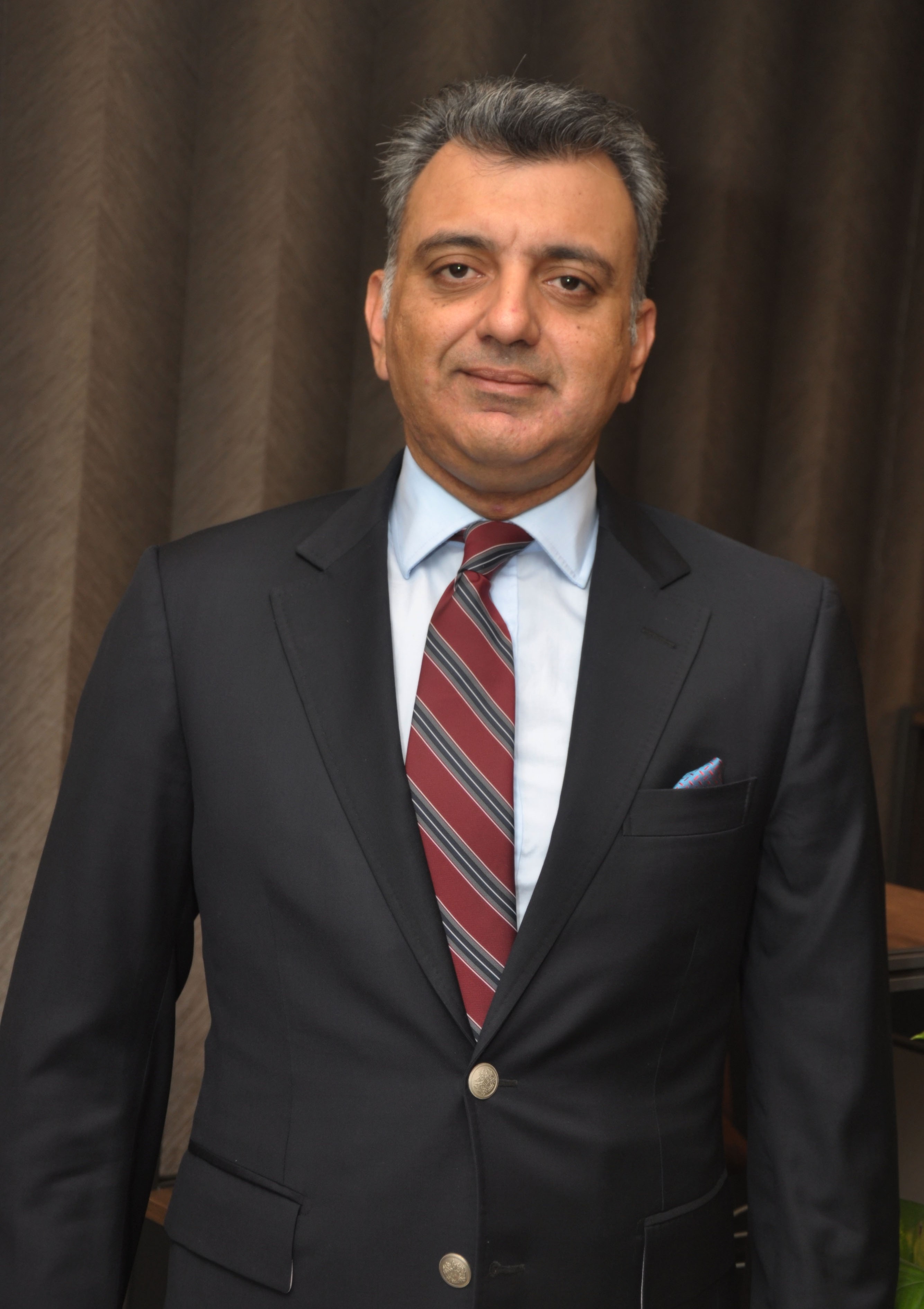Introducing equity investment in Pakistan, Capventures brought $5 million as FDI to Pakistan from the UK, the UAE and Hong Kong – yet kept the door firmly shut on the local investors. The company though has plans, as divulged by the CEO, to include local investors. But for the moment, bringing them into the fold does not seem worthy of the hassle to Capventures as it involves oversight of the local authorities. “With us transparency is not the issue. We already disclose more to our investors than is required by the law.”
Though left unsaid, the inference obviously is that harassment of the powers-that-be is scary enough for Capventures to not to allow a look-in to the locals.
Since it aims at rapid capital growth, the company deals in high-risk, high-revenue assets. Since the investors need to be willing and have the capacity to hold their investments for longer in case a bear run ensues, by its nature it reduces the proportion of population having the capacity to hold onto its investment.
There is another side to Capventures: taking over businesses through investment and put these to high-growth trajectory. It may seem zero risk for the company and its management, but it is not for it has put in considerable investment. And their share in equity brings as much benefit to the original business owners as it does to Capventures, if not more.
Ali Nadir Syed’s tete-a-tete with Profit shed light on the projects, plans and prospective operations of Capventures.
Profit: Define your motivation for this business and why don’t you have an online presence?
Ali Nadir Syed: Four years ago when we started, the idea behind Capventures was quite simple. I had been an expat for the last decade and a half, in the UK and in the Middle East, engaged in investment banking and private equity work. Looking at other markets developing back in 2013, I felt that it was the time to do something similar for Pakistan. We wanted to do it slightly differently – starting with small investments and getting to know the business before publicizing it. Now we have enough of a track record and experience to market ourselves and we are now gradually becoming known.
Since we were neither raising money from the market nor doing anything requiring marketing, our business is not dependent on people’s perception. There are two sides to it: the ability to identify opportunities and the ability to talk to entrepreneurs and business owners. That comes through personal networks, which I and my partners have developed over the years.
Profit: Which sector has been most successful for you so far?
ANS: We prefer to operate in sectors that are dependent on the domestic economy. With 80 to 85% of the GDP coming from domestic consumption, Pakistan is a consumer-driven country, with exports playing a very small part.
I look at consumer dependent or consumer driven in the same way. If you look at businesses, these are primarily of two kinds: those that are competing on international level, and those that are only local – the latter’s demand stemming from the indigenous consumers, though it does not necessarily mean it lacks presence on international level but that the growth is at home. That market – including apparel, consumables, FMCGs, all kinds of consumer goods like electronics and cars etc. – in Pakistan is growing rapidly, at almost two and a half times more in the GDP. We are not in all these sectors but their growth is rapid.
Profit: What other parameters do you take into account while evaluating a potential investment aside from the local consumer demand?
ANS: From the industry perspective we look at a few things: the mid-term and long term growth, how competitive the players are, and also the people who have strong positioning in their respective sectors. And then we also like to work in sectors where we can add value, improve processes and financial management for. We don’t provide consultancy services but are pretty hands on with our investments.
We have a full finance team and for every investment that we make two or three people are dedicated to work on that. We don’t pretend to know better than the people running the business, and don’t get involved in the operations run by the owners. Our role is more on the strategy and growth side.
In small businesses and family home services there are lots of complaint issues. So our focus areas have to be in total compliance with the laws and taxes.
Profit: How do the people take it? From the outside it seems like somebody else is coming and taking over the business?
ANS: It depends on one’s ambition and growth plans. If you are willing to grow and to put in the hard work then it’s not a problem. Mocca is an example – well done, enjoyable experience but there was just one outlet. Aesthetically or from a business point of view it can be a different market but whatever is marketed, the product needs to be providing a quality service suited to that market.
Usually what happens is that the owners do not have the capital or they have lived abroad for a long time or they just don’t have the ability to grow the business beyond one outlet. We go to such businesses and tell them that if you want to grow, we will be there with you but then we will take a portion of ownership in terms of how the business is run. And for them it’s a good thing anyway because they were just running one outlet. In the case of Mocca now we have six outlets, with plans to extend it 10 by the end of 2018. Now we own a majority stake in that business. About three years ago, we invested in and gradually increased our stake in Zara Shahjahan – an apparel business.

Profit: What is the risk appetite of your organisation?
ANS: We are growth capital investors. We typically want to invest in up and running companies, where the owner has spent some time in defining the concept and displayed some commitment to stand behind the business.
They must have spent 3-4 years, having seen good times and bad and having proven themselves to be resilient. The business has to make sense for us but the owner is most important for our investment decision, for he needs to have the vision and also understand the long-term benefits of working with somebody like us. In the beginning we make many suggestions, telling them how to run things. The owner has to be ready and willing for that.
Profit: How are you different from a mutual fund?
ANS: A mutual fund usually invests in public equities, and rarely in private equity because mutual funds rely on small investors and are concerned about risk. Private equity firms on the other hand invest in unlisted businesses and if they want to sell their stake in a business that might not be very easily or quickly possible. My investors have to understand that the things that we are buying into cannot be immediately sold.
Profit: The SECP regulations require eligibility of investors, notice periods for liquidating investments etc. What are other statutory regulations for your investments?
ANS: There are some regulatory frameworks around how private equities are supposed to work but we are not bound by that yet. For private companies there are no such limitations. We do have financial statements of the potential companies and we go privately and do our due diligence before making investment decisions.
Profit: So how does it work? You go to the company and ask them for financials and then ask if they want your investment or not?
ANS: We do have a list of sectors that we prefer and keep an eye on and also which companies are making a mark. If something interesting comes up there, we enter into that. Recently, after monitoring it for a while, we moved into the transportation business. Since we couldn’t find a company to partner with so we came up with a new venture – called Veda. The company is supplying buses to the Multan metro.
Profit: You gave a wide berth to public limited companies but are now dealing with the government. Why the shift?
ANS: We don’t stay away from the public limited companies because they are under so much control. We don’t invest in them because they are typically larger, and would not allow us the kind of control that we need to run our investments. And being in partnership with the government also does not necessarily mean that we can’t control the business. Obviously over some things we have absolutely no control, but the operations is totally in our hands. We do have to run it within the parameters set by the government but within them we have complete autonomy.

Profit: Why don’t you have investors from Pakistan on board?
ANS: We do have plans but there is certain regulatory things that we have to take care of before we can do that. If we bring in indigenous investments then we will be regulated by the SECP. It is not because of any data disclosure issue. The information we give to our investors is already more than what SECP requires so being regulated or information-sharing is not an issue to us. As a next step we want to take local investors on board because we think that this is an interesting opportunity for Pakistani businessmen as well. But usually even if people here want to invest, they veer towards real estate.
Profit: There is obviously no liquidity, no short term return, and no profit sharing. How do you present yourself to your potential investors?
ANS: They are no guaranteed or annual returns, but there are long-term equity returns involving capital growth. There is no profit-sharing either but that is the worldwide private equity industry procedure. There is a hurdle rate, if you made that hurdle rate and make any returns above it, you can have a percentage of that for yourself and the rest goes to the investors. For example, if the hurdle rate for a particular business is 12%. If you can make 18%, a percentage of that – 3% is ours and the rest is investors’. Every business has a different profile and hurdle rate.
Despite absence of short term gains or liquidity, people invest because in the long run you can make a lot of money in this.
Profit: What is the average rate of return for private equity investments?
ANS: We will not be happy with our services if on average we are making less than 20% annual return. Hurdle rate is obviously lower than this, around 10-12% usually.
Profit: What is your share on stake in your investments on average and a ballpark figure for revenues?
ANS: I cannot disclose that because it’s proprietary information but generally we have a minority stake.
Profit: As I understand it you operate on zero risk apart from your own investment in a business?
ANS: This business is like any other business. All we are doing is managing people’s money. So our risk is not exactly how much money we are making on our investments but whether we are providing a return with which our investors are happy. Our risk or return in the long run would be measured in terms of how many people come to us to manage their money.
Profit: On the one side, you are bringing in direct foreign investment and on the other if any of your investor liquidates his investment you will have to send back the remittances. So what is your net impact on the national economy?
ANS: So far it has only been FDI. And we are in the investment phase anyway. The economy of the country is growing and FDI has improved a little with the advent of China Pakistan Economic Corridor but it still is extremely low. And we feel that there is a long way to go before net investment can work the other way or when our investors starts to look at liquidating their investments.
Profit: How do you choose your workforce? How many people work here?
ANS: With different kind of skillset needed, workforce is our biggest expense. We need two things mostly, financial analysis modelling, forecasting, risk management and compliance expertise. We evaluate our candidates based on these.
We have a core team of six people. They look at our current and new businesses. These are all employees and none of them has any stake in the business. There are also two operating partners, I and Amir Zaidi.

Profit: Do you provide any other fringe benefits to your investors such as making trade easier or finding customers here for their primary businesses?
ANS: No, and there is no spillover effect apart from that they get to look at such investments on their own. We are very heavy on disclosure and reporting, so we also publish reports on what is happening in the market and the country. They are not posted online but sent to them directly.
Profit: How much have you invested so far?
ANS: Close to $5 million but we have significantly more committed than we have invested.
Profit: Why are there not many private equity funds in Pakistan?
There is not enough knowledge or awareness about this sort of business here. Even the stock market penetration is significantly lower than other countries. Private equity as an asset class is also significantly less known in Pakistan. Being risk averse maybe the single biggest reason, but people are not comfortable with sharing information. They have grown up with a mindset that if you disclose information, other businesses and tax authorities will know etc. Such mindset isn’t amiable to change but for professional investors to come in it does need to change.
Profit: Do you think that the market is ready or do you think that you are preparing the market for private equity investments in Pakistan?
ANS: We hope the market is ready. The response has been good so far. I have spent a lot of my time out of Pakistan and I have seen markets develop in other countries similar to Pakistan, or maybe about 10 years ahead of Pakistan. If you look at Indonesia or Malaysia, we have the same growth of private equity industry there. This is a natural evolution that is going to happen. That is not to say that we will be successful or unsuccessful because nobody can say that but it’s about time. About a decade ago, a couple of companies started this in Pakistan but could not do well; we also had a lull period of seven years, but since the last couple of years the market seems ready. The thing is that you need to rely on growth in the country and that is happening in Pakistan now.
Profit: Have you considered investing in startups or businesses at the stage of incubation?
ANS: We will slowly look into that. And this may get too technical but there are subspecialties in private equity investment. There are venture capital firms that invest in early-stage businesses and primarily things that are new. And then there are growth capital investors, like us, who invest in businesses that need to grow. And very large private equity firms tend to be late stage investors, providing expansion capital. We are growth capital investors but it does not mean that we will not do venture capitalist work at all. But even when it happens, it will be a small part of our portfolio.
PROFIT: Do you have a minimum investment requirement?
ANS: Contractually there is no minimum. Typically for a single investment, only rarely $100,000 – usually it’s bigger than that.
Profit: Your investors belong to how many countries?
ANS: Three, the UK, the UAE and Hong Kong, but we are investing only in Pakistan.
Profit: What are your plans for the next 5-10 years?
ANS: To deploy $30-35 million in three years is our target. We will also like to have one to two successful exits by then – so far there has been none. Given that we are not a fund structure, we are not obligated to sell after a certain period of time. If investors see growth, they might not wish to sell anyway. We keep getting management fee on an annual basis, so the going is good but for the reputation of the business, successful exits are also important.


































